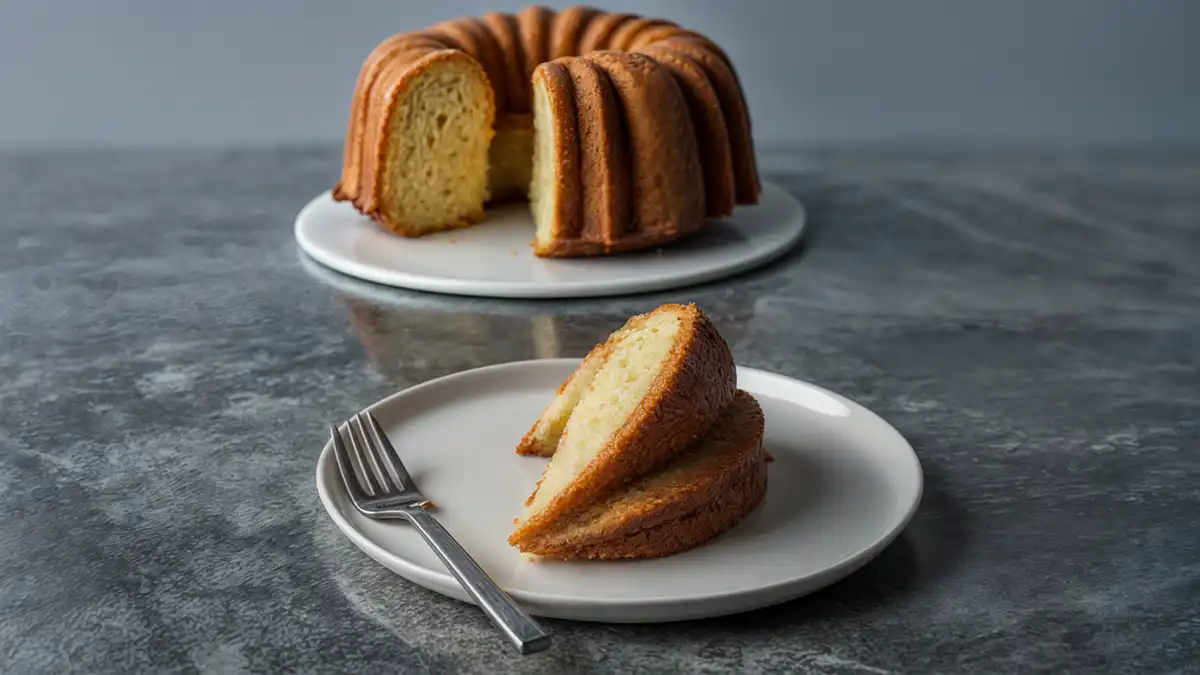Welcome, bakers! Today, we’re diving into a dessert that’s not just a treat; it’s an experience. The cracked cake recipe is a marvel of the baking world, combining moist, fluffy texture with a glaze that will make your taste buds sing. This isn’t just another cake—it’s a journey through delightful flavors and a texture so perfect, you might just find yourself reaching for a second slice before you finish the first!
Table of Contents
| Section | Content |
|---|---|
| Introduction | An engaging introduction to what makes cracked cake a unique and popular dessert. |
| Exploring Variations in Cracked Cake Ingredients | Detailed exploration of ingredient substitutions and variations to customize the recipe. |
| Step-by-Step Guide | A comprehensive guide on preparing and baking the cracked cake, with tips on achieving the best texture and flavor. |
| Baking Tips for the Ultimate Cracked Cake | Professional advice on mixing, baking, and glazing techniques to perfect the cake-making process. |
| Pro Tips for Storing and Serving | Tips on how to store and present the cracked cake to maintain freshness and enhance presentation. |
| FAQs | Answers to common questions about cracked cake and other types of cakes, providing deeper insights into baking. |
What Makes Cracked Cake Recipe Irresistible?
Imagine taking that first bite: the exterior is slightly crisp from a sugary glaze, and as it gives way, you’re met with the softest, most sponge-like cake imaginable. It’s infused with hints of vanilla and a touch of wine, which, believe me, creates a symphony of flavors that’s sophisticated yet comforting. Here’s why this cake stands out:
- Rich Flavor: Each ingredient in a cracked cake recipe is chosen not just for taste but for how it combines with others to create a rich, layered flavor profile.
- Perfect Moistness: The secret to its irresistible texture is the glaze poured over the cake while it’s still warm, seeping through every pore and cranny, ensuring every bite is as moist as the first.
Exploring Variations in Cracked Cake Ingredients
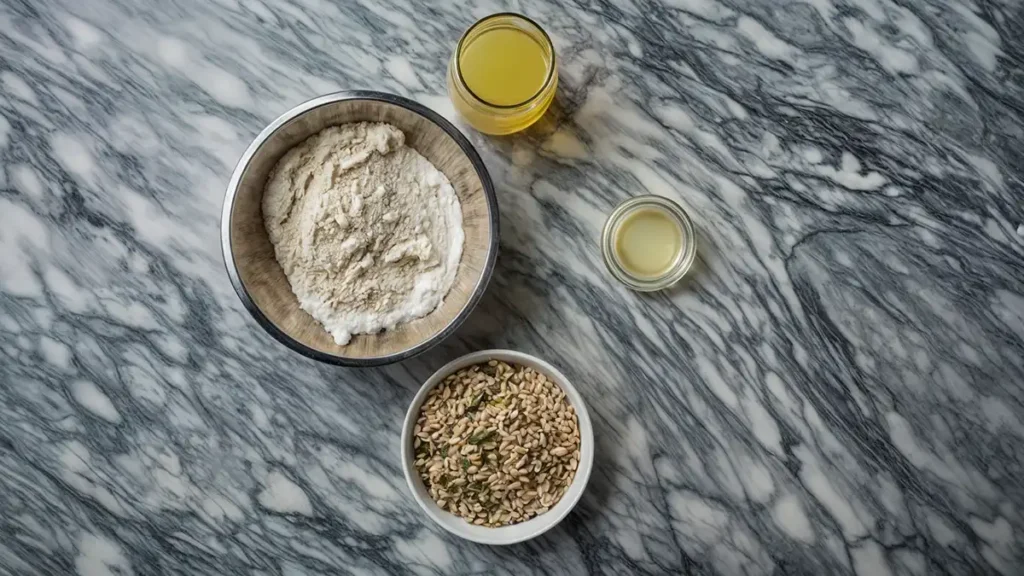
Crafting the perfect cracked cake involves not just following a recipe but understanding how to adapt it to your tastes and needs. Whether you’re looking to tweak the recipe for dietary restrictions or just want to shake things up with a new flavor profile, let’s explore how you can make this cake your own!
Customizing Your Cake Mix
The base of our cracked cake starts with a simple yellow cake mix, but who says simple can’t be flexible? If you’re feeling adventurous, why not experiment with different types of cake mixes?
- Alternative Flavors: For a twist, try using a Martha White Cornbread Mix. Yes, cornbread! It adds a delightful texture and a golden sweetness that pairs beautifully with the traditional rich glaze of a cracked cake.
- Dietary Adjustments: Need a gluten-free option? Swap out the standard cake mix for a gluten-free variety. The same great taste, but friendly for those with dietary restrictions.
Creative Substitutions for Classic Ingredients
Sometimes, a little change can bring a whole new depth of flavor or make a recipe more accessible to those with dietary preferences.
- Wine Alternatives: Not a fan of using wine? Substitute with white grape juice or non-alcoholic wine to keep that fruity depth without the alcohol.
- Egg Replacements: For our vegan friends, a flaxseed or chia seed mixture can work wonders in place of eggs.
- Oil Options: Consider using coconut oil for a hint of tropical flair or stick with traditional vegetable oil for that classic taste.
Incorporating Unique Add-Ins
Let’s get creative with some add-ins that can take your cracked cake from basic to brilliant.
- Spice It Up: Add a dash of cinnamon or nutmeg for a warm, spicy note that complements the sweetness.
- Fruity Flair: Mix in some apple sauce for added moisture and a subtle fruity undertone. Check out this Cinnamon Applesauce Recipe for a homemade touch!
- Crunch and Texture: Throw in some chopped nuts or seeds for a delightful crunch that contrasts the cake’s soft texture.
Table: Ingredient Swaps and Their Effects
| Original Ingredient | Alternative | Purpose | Resulting Change |
|---|---|---|---|
| Yellow Cake Mix | Gluten-Free Cake Mix | Accommodate dietary restrictions | Maintains texture, safe for gluten-intolerant |
| Eggs | Flaxseed Mixture | Vegan alternative | Adds moisture, maintains binding |
| White Wine | White Grape Juice | Non-alcoholic substitute | Keeps fruity depth, makes it alcohol-free |
| Vegetable Oil | Coconut Oil | Flavor variation | Adds a slight coconut flavor, increases fragrance |
Step-by-Step Guide to Making the Perfect Cracked Cake Recipe
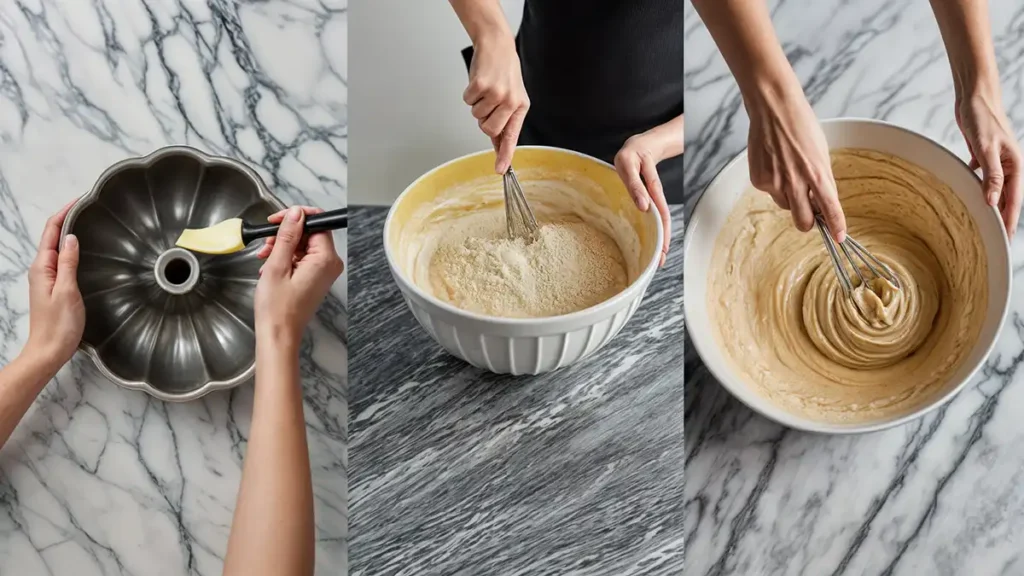
Creating the perfect cracked cake is a joyful journey into the world of baking where each step adds to the final delight. Here’s a detailed guide to ensure your cake turns out beautifully moist and irresistibly tasty every time.
Preparing Your Ingredients and Tools
First things first, let’s set ourselves up for success:
- Gather Ingredients: Make sure all ingredients are measured and laid out. This includes your cake mix, pudding mix, eggs, oil, water, and wine.
- Room Temperature Items: It’s crucial to have your eggs and any other refrigerated items at room temperature to ensure they mix well.
- Prep Your Bundt Pan: Grease your bundt pan thoroughly. Use butter or non-stick spray, and don’t forget to dust it lightly with flour to prevent sticking.
Mixing the Batter
The secret to a perfect cracked cake lies in the mix:
- Combine Dry Ingredients: Start by mixing the dry ingredients—cake mix and pudding mix—in a large bowl.
- Add the Wet Ingredients: Slowly add in the eggs, water, oil, and wine. Mix these together until just combined; be careful not to overmix as this can make the cake tough.
- Pour into Pan: Once your batter is smooth and well combined, pour it into your prepared bundt pan. Tap the pan lightly on your counter to remove any air bubbles.
Baking to Perfection
Baking is where the magic happens:
- Oven Settings: Preheat your oven as directed by the cake mix box. Typically, this will be around 350°F (175°C).
- Baking Time: Place the cake in the oven and bake according to the time specified on the cake mix box, usually between 45-50 minutes.
- Check for Doneness: Use a toothpick or cake tester. Insert it into the cake; if it comes out clean, your cake is ready.
Applying the Glaze
The glaze makes the cracked cake truly special:
- Prepare the Glaze: While the cake is baking, prepare your wine glaze by gently heating butter, sugar, and wine in a small saucepan until the sugar dissolves.
- Glaze the Hot Cake: As soon as the cake is out of the oven, poke holes in the top using a fork or skewer and pour the warm glaze over it, allowing it to soak into the cake.
Cooling and Serving
The final steps before you can enjoy your masterpiece:
- Cool in Pan: Let the cake cool in the pan for about 10 minutes. This allows the glaze to soak in thoroughly.
- Turn Out the Cake: After cooling, turn the cake out onto a serving plate. If it sticks, run a knife around the edges to loosen it gently.
Watch and Learn How To Make Cracked Cake Recipe
For a visual walkthrough, check out this helpful tutorial on making a cracked cake:
Expert Baking Tips for the Ultimate Cracked Cake Recipe
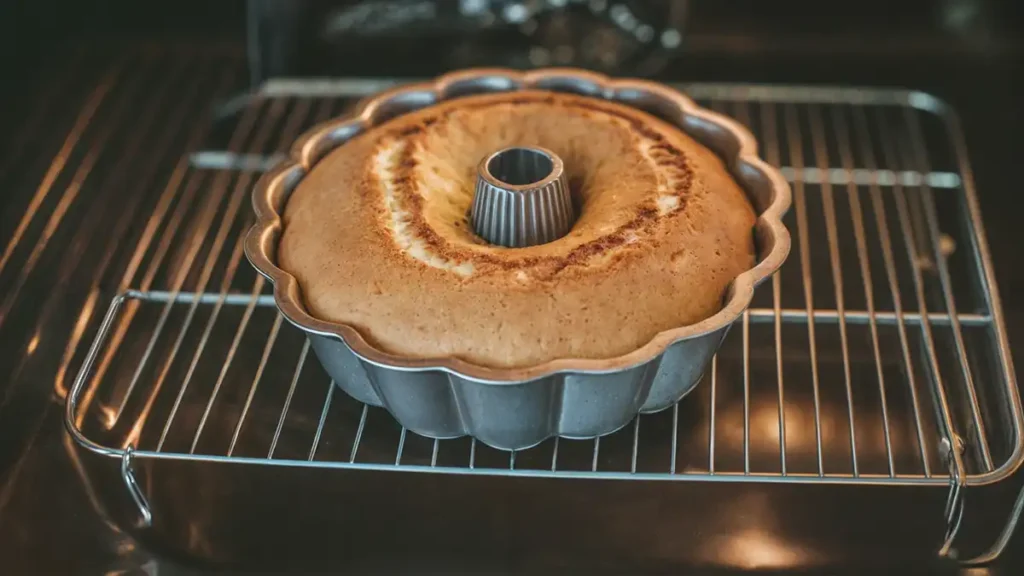
Elevate your baking skills with these insider tips to ensure your cracked cake is the talk of any gathering. With a focus on the little details, you can turn a good cake into a great one!
Achieving the Perfect Mix
The foundation of a good cake lies in how well you mix your ingredients. Here are some pro tips to make sure your batter is just right:
- Room Temperature Ingredients: This might seem like a small detail, but it makes a huge difference. Ensure ingredients like eggs and butter are at room temperature to mix more evenly.
- Mixing Technique: When combining your ingredients, use a mixer at low speed to avoid overmixing, which can make your cake dense and heavy.
- Scrape the Bowl: Occasionally stop mixing and scrape down the sides of the bowl with a spatula. This ensures that everything gets mixed thoroughly.
Mastering the Bundt Pan
Bundt pans can be tricky due to their intricate designs. Here’s how to ensure a beautiful cake every time:
- Proper Greasing: Use a generous amount of butter or non-stick spray, and don’t forget the crevices where cake tends to stick. You can also dust the pan with flour or use a mixture of flour and oil for a non-stick guarantee.
- Testing the Cake: To avoid under or over-baking, start checking the cake 5-10 minutes before the recipe suggests. A toothpick or skewer should come out clean when inserted into the thickest part of the cake.
Glorious Glazes and Toppings
A good glaze can transform a cake. Here’s how to get it just right:
- Consistency of the Glaze: Ensure your glaze is thin enough to pour but thick enough to coat the cake. If it’s too runny, add more sugar; if it’s too thick, thin it out with a little more liquid.
- Applying the Glaze: Pour the glaze over the cake while it’s still warm to help it soak in better, enhancing the moisture and flavor.
For a deeper dive into how ingredients work together in glazes and toppings, check out the science behind baking techniques. This resource offers great insights to perfect your glazing skills.
Pro Tips for Storing and Serving Cracked Cake Recipe
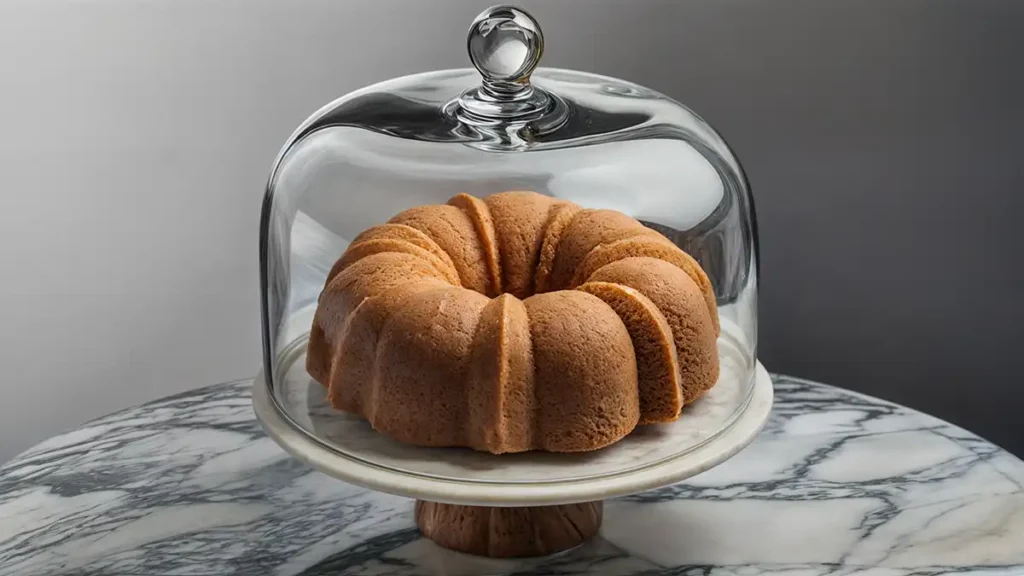
Proper storage and presentation can make a big difference in how your cracked cake tastes and looks when it’s time to serve. Here’s how to keep it fresh and irresistible from the kitchen to the table.
Storing Your Cracked Cake for Optimal Freshness
Keeping your cake delicious days after baking is all about the details:
- Room Temperature Storage: Store your cracked cake in an airtight container at room temperature for up to 3-4 days. This keeps it moist and prevents it from drying out. For more tips on storing baked goods, check out our comprehensive guide on Crumbl Sugar Cookie Recipe.
- Refrigeration: If you’re in a warmer climate or if your cake includes perishable toppings or fillings, refrigerate it. Wrap the cake in plastic wrap before placing it in an airtight container to avoid absorbing other flavors from the fridge. Learn more about refrigerating baked treats with our Cracker Barrel Pancake Recipe which includes tips on keeping pancakes fresh.
Improving Your Cake Presentation
A beautiful presentation can elevate your cake from home-baked to haute cuisine:
- Before Serving: Let refrigerated cake sit at room temperature for an hour before serving. This enhances the flavors and makes the cake more enjoyable.
- Adding Garnishes: Just before serving, enhance your cake with simple garnishes like a dusting of powdered sugar, a drizzle of syrup, or a few fresh berries. This not only adds to the visual appeal but also introduces complementary flavors. For creative garnishing ideas, see our Nutella Pastry Puff Recipe.
Table: Tips for Storing and Serving Your Cake
Here’s a handy reference to keep your cracked cake as delightful as the day it was baked:
| Storage Method | Description | Tips |
|---|---|---|
| Room Temperature | Best for short-term storage of up to 3-4 days. | Use an airtight container to keep the cake moist. |
| Refrigeration | Recommended for longer storage or in warm climates. | Wrap well to prevent the cake from drying out or absorbing other flavors. |
| Presentation Tips | Enhance the cake’s appearance and taste with appropriate garnishes. | Use fresh ingredients for garnishing to add a pop of color and flavor. |
FAQs About Cracked Cake Recipe
What is Crack Cake Made Of?
Crack cake, a delightful treat known for its addictive taste, is typically made from a blend of simple yet indulgent ingredients. The base often includes a yellow cake mix combined with instant vanilla pudding, eggs, oil, and sometimes a splash of white wine or another sweet liquid to enhance the moisture and flavor. The “crack” aspect usually comes from a rich, sugary glaze that seeps into the warm cake, creating irresistible pockets of sweetness.
What is Smash Cake Made Of?
Smash cake is a small, often colorful cake designed specifically for babies to ‘smash’ during their first birthday photo shoots. It’s made from basic cake ingredients like flour, eggs, sugar, and butter, and is decorated with vibrant, baby-safe icings and colors. This cake is as much a sensory play tool for toddlers as it is a treat.
What Can You Make With a Broken Cake?
Don’t toss that broken cake! It can transform into several delicious desserts. Consider making a trifle by layering chunks of cake with cream, fruits, and pudding. Cake pops are another great option, where crumbled cake is mixed with icing and formed into bite-sized balls, then dipped in chocolate. These ideas not only save your baking mishap but turn it into something uniquely tasty.
What is Dump Cake Made Of?
Dump cake might have a casual name, but it’s a serious contender in the dessert world for ease and tastiness. It generally consists of a fruit filling dumped into a baking dish, covered with a box of cake mix, and topped with butter. As it bakes, the butter melts through the cake mix, creating a crusty top layer over a gooey fruit base.
Conclusion
And there you have it—a little bit of knowledge to help you navigate some of the sweet intricacies of the baking world. Whether you’re cracking into a crack cake, smashing a smash cake, salvaging a broken cake, or dumping a dump cake, there’s always something new to learn and enjoy in the kitchen.
Thank you for joining me on this delicious journey. If you have any more questions, or if you tried making one of these delightful desserts, don’t hesitate to drop a comment below. Happy baking, and thanks for reading!

